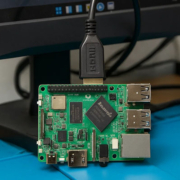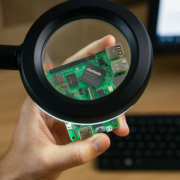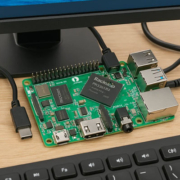What Are Dev Boards? A Beginner’s Guide to Development Boards in Embedded Systems
A dev board, short for development board, is a pre-assembled circuit board designed to help developers test, prototype, and develop applications involving microcontrollers, processors, or System on Chips (SoCs).
They are commonly used to:
- Evaluate chip performance
- Rapidly prototype new electronic products
- Test code for embedded systems
- Explore hardware/software integration
Dev boards provide a ready-to-use platform that eliminates the need to design and build an entire circuit from scratch.
Key Components of a Dev Board
While different development boards vary depending on the processor or architecture, most contain the following elements:
-
Microcontroller or Processor (MCU/CPU/SoC)
The heart of the board, where computation and logic happen. -
GPIO (General-Purpose Input/Output) Pins
Interfaces for connecting sensors, motors, LEDs, and other components. -
Power Supply Interface
USB or dedicated power input for supplying the board. -
Communication Interfaces
Such as UART, I2C, SPI, Ethernet, Wi-Fi, or Bluetooth. -
Programming Interface
USB, JTAG, or serial ports for flashing and debugging code. -
Onboard LEDs, Buttons, or Display Interfaces
Useful for quick testing and interaction during development.
Common Types of Dev Boards
1. Microcontroller-Based Dev Boards
Used for basic control and I/O applications.
-
Examples: Arduino Uno, STM32 Nucleo, ESP32 DevKit
2. Single Board Computers (SBCs)
Include full operating systems and are used for advanced applications.
-
Examples: Raspberry Pi, PortPi 3A, BeagleBone Black
3. SoM + Carrier Board Solutions
System-on-Module with a baseboard for more scalable or industrial-grade prototyping.
-
Examples: Portworld’s SoM + carrier board kits, NVIDIA Jetson series
4. FPGA Dev Boards
Programmable logic platforms used for custom hardware logic design.
-
Examples: Xilinx Zynq, Intel DE10-Nano
What Are Dev Boards Used For?
-
IoT Device Prototyping
Connect sensors, run edge AI, and test real-world applications. -
Smart Home Development
Create custom control panels, automation hubs, and smart devices. -
DIY Projects & Learning
Ideal for students and makers exploring hardware and coding. -
Industrial Applications
Used in early-stage product design for robotics, gateways, and industrial automation. -
AI/ML on Edge
With boards supporting GPUs or neural processors, developers can deploy AI workloads on embedded systems.
Dev Boards vs Evaluation Boards vs SBCs
| Term | Purpose |
|---|---|
| Dev Board | General-purpose development and prototyping |
| Evaluation Board | Designed to showcase the features of a specific chip or IC |
| SBC (Single Board Computer) | Full computer on a single board, suitable for OS-based applications |
Portworld’s Dev Board Solutions
Portworld offers customized dev board solutions tailored for:
- Android/Linux-based applications
- IoT & smart home projects
- Industrial-grade edge computing
- SoM + carrier board modular development
With support for OEM/ODM, rich peripheral options, and long-term supply chain stability, Portworld’s dev boards are ideal for both rapid prototyping and scalable production.
Dev boards are essential tools in the world of embedded systems, enabling rapid development, testing, and innovation. Whether you’re working on a smart home control panel, building an IoT device, or exploring AI at the edge, a suitable development board can significantly accelerate your project.






